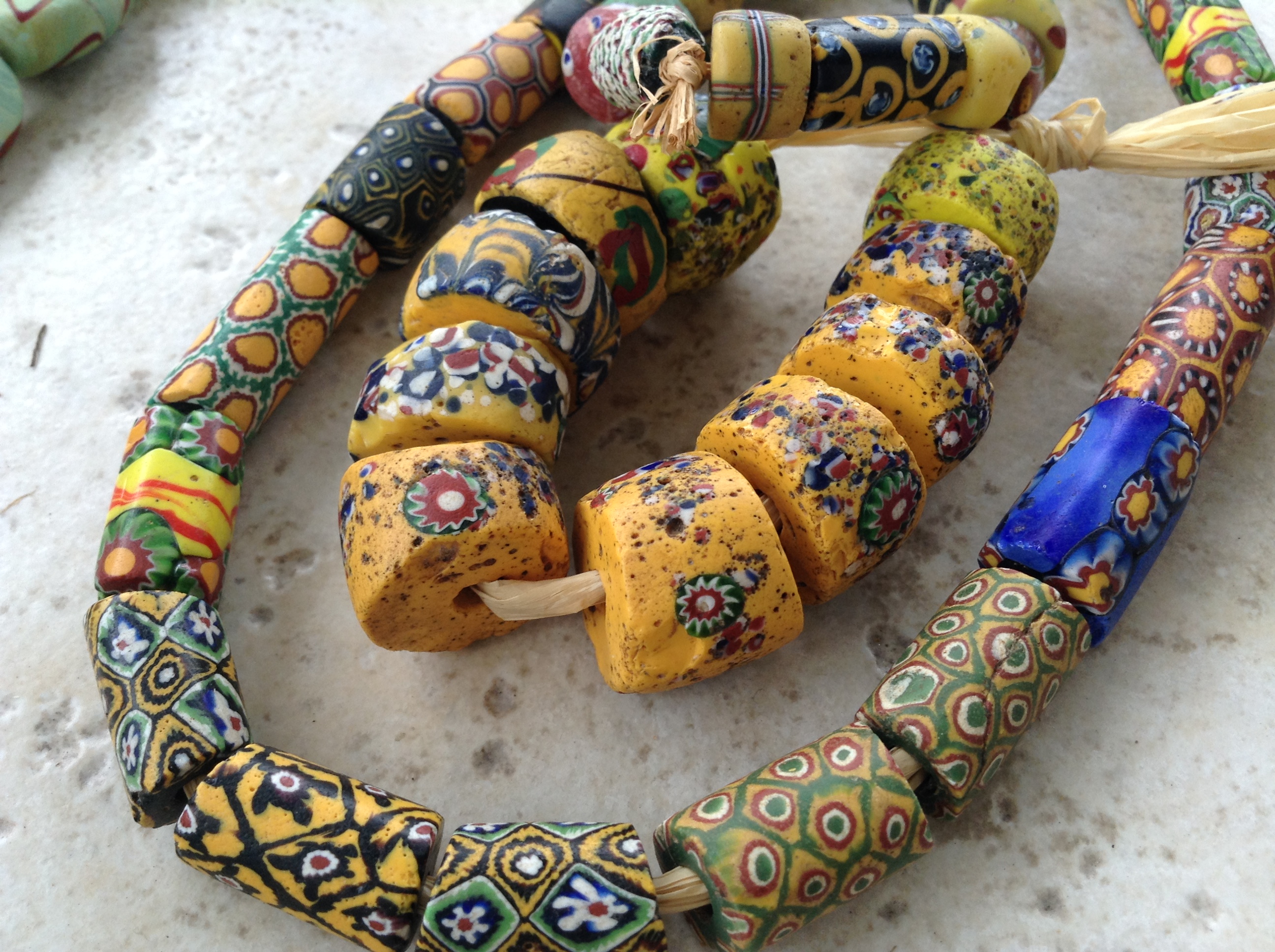Sep 28th 2023
The Rich Tapestry of African Trade Beads: A Journey Through History

African trade beads, also known as "African trade" or "slave" beads, are exquisite and colorful artifacts that bear witness to a complex history of trade, cultural exchange, and economic transactions. These beads have traversed continents and centuries, leaving an indelible mark on the tapestry of African history. This article explores the fascinating history of African trade beads, tracing their origins, significance, and enduring legacy.
Origins of African Trade Beads
The story of African trade beads begins hundreds of years ago, during the era of transatlantic trade routes. European traders and explorers initially sought African resources such as gold, ivory, spices, and later, enslaved people. In exchange for these commodities, they introduced a wide array of glass beads produced in Europe, India, and Asia. These beads quickly found their way into the African interior, where they became highly valued items.
European Glass Beads
Venetian glass beads, also known as "Murano beads," were among the first European beads to reach Africa. These intricate, handmade glass beads were prized for their vibrant colors and intricate designs. Dutch and Czech beads also became popular in the African trade, each carrying its unique patterns and significance.
Symbolism and Significance
African trade beads played a crucial role in the continent's social, economic, and cultural fabric. They were used as currency, adornments, and symbols of status and identity. Different African communities attributed distinct meanings to various bead designs, colors, and shapes. For example, the famous "King Beads" were often worn by tribal leaders, signifying authority and power. Similarly, waist beads adorned by women held cultural, spiritual, and aesthetic significance.
Bead work in African Culture
Bead work was an integral part of African culture, with beads used in various rituals, ceremonies, and daily life. They were incorporated into clothing, jewelry, headdresses, and other adornments. Bead work also played a role in storytelling, as some patterns and designs conveyed specific messages or stories within different African communities.
The Legacy of African Trade Beads
African trade beads continue to be valued and sought after in the present day, both for their historical significance and their timeless beauty. Collectors, artisans, and enthusiasts worldwide appreciate the intricate craftsmanship and vibrant colors of these beads. They are used in contemporary jewelry and art, often blending traditional techniques with modern designs.
In Conclusion
The history of African trade beads is a testament to the rich tapestry of African culture, trade, and resilience. These beads, once exchanged for valuable resources and human lives, have evolved into cherished symbols of heritage and artistic expression. As they continue to captivate the world with their beauty and historical significance, they remind us of the enduring legacy of Africa's cultural contributions to the global stage.

